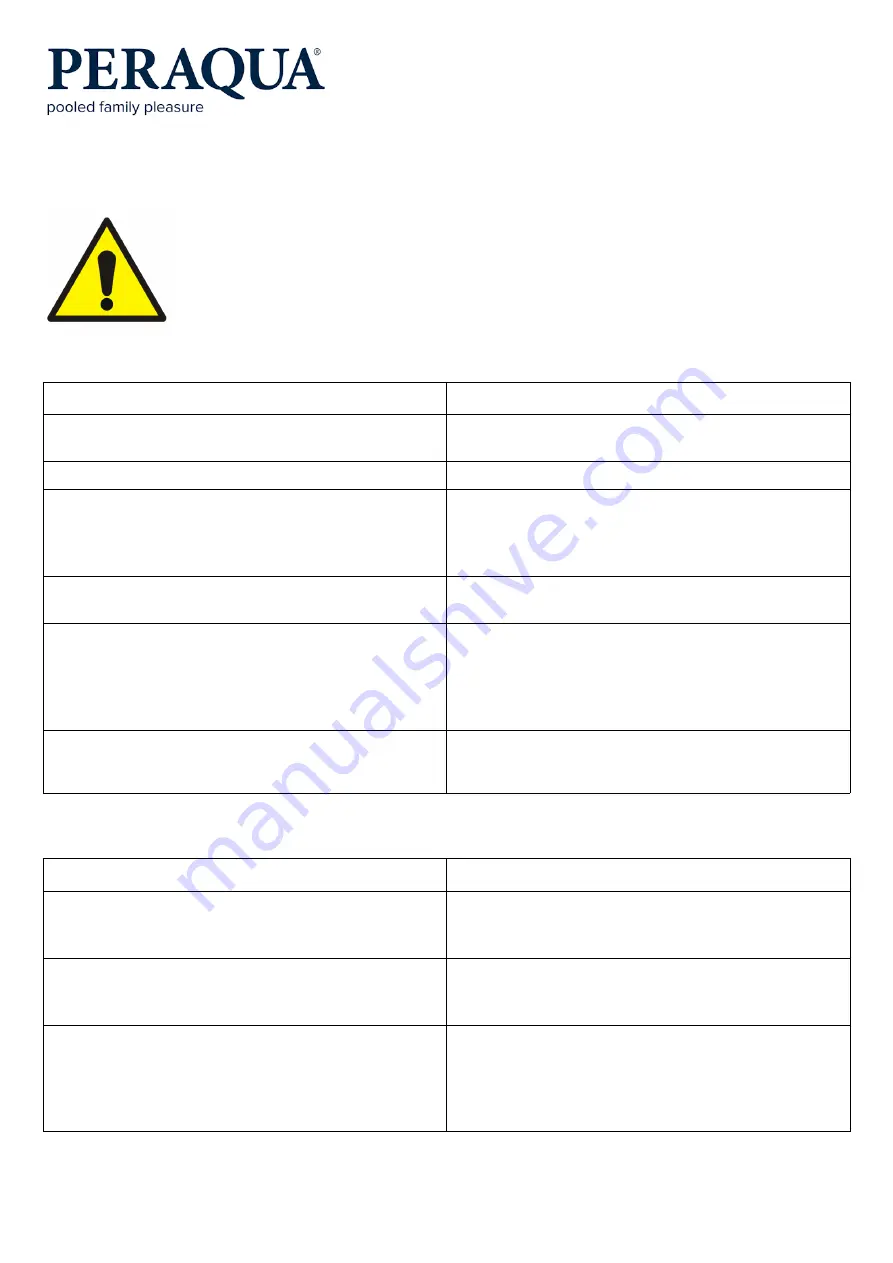
7.2 Repair
CAUTION!
Personal protective equipment must be used before removing dirt and
contamination from the steel surface.
7.2.1 Cleaning of pollution
type of pollution
cleaning products
fingerprints
soapy water or detergent, chloride-free glass
cleaners
limescale
solution of ¼ vinegar and hot water
¾
oils and lubricants
alcohol-based products (including methyl
alcohol and isopropyl alcohol) solvents, e.g.
acetone, cleaning agents for chromium plated
parts
paints
paint strippers, based on alkali compounds
or solvents
cement and mortar
water with a small amount of vinegar at an
early stage, in the case of older pollutants -
a solution containing a small amount of
phosphoric acid, followed by water (preferably
demineralised)
iron particles from tools or contact with
structural steel
at an early stage - mechanically, in the
case of pits - etching and passivation pastes
7.2.1 Repairing surface damage
type of damage
method of repair
minor scratches
use a polishing agent (for stainless steel or
chromium) with a soft cloth, suede leather
or nylon sponge
deeper scratches
use the non-wovens for stainless steel
together with water, then apply polishing
agent as follows to restore shine
greater damage, cavities in the material
larger damages can be repaired only by a
specialist through the use of equipment and
abrasives for stainless steel, material losses
require locksmith's and welding interventions
and restoration of the passive layer
17



































